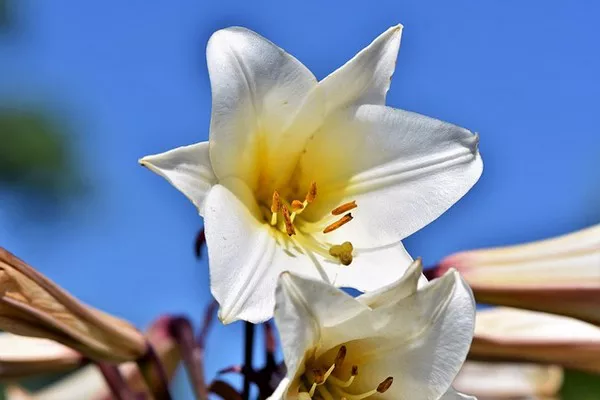Memorial Day, a solemn occasion in the United States, serves as a poignant reminder of the sacrifices made by those who served in the armed forces. It is a day to pay tribute to the brave men and women who laid down their lives in service to their country. While ceremonies, parades, and speeches mark this day, flowers also play a significant role in commemorating the occasion. From traditional red poppies to elegant white lilies, the choice of blooms holds deep symbolism and meaning. In this article, we delve into the tradition of using flowers on Memorial Day, exploring their significance and the various ways in which they honor the memory of fallen heroes.
The Tradition of Memorial Day Flowers
The tradition of honoring the fallen with flowers dates back to ancient times when civilizations would lay wreaths and floral arrangements on the graves of soldiers and warriors. In the United States, the practice of decorating graves with flowers gained prominence after the Civil War. Initially known as Decoration Day, the holiday was established to commemorate Union and Confederate soldiers who died during the conflict. Families and communities would gather to adorn the graves of fallen soldiers with flowers, a gesture of remembrance and gratitude.
Over time, Decoration Day evolved into Memorial Day, a national holiday observed on the last Monday of May. While the name and date changed, the tradition of using flowers to honor the fallen remained a central aspect of the commemoration. Today, floral tributes are an integral part of Memorial Day ceremonies, serving as visual reminders of the sacrifices made by servicemen and women.
Symbolism of Memorial Day Flowers
Each type of flower holds its own symbolism and significance, making them powerful emblems of remembrance on Memorial Day. Here are some of the most commonly used flowers and their meanings:
1. Red Poppies: Perhaps the most iconic symbol of Memorial Day, red poppies are associated with honoring fallen soldiers. This tradition stems from the famous World War I poem “In Flanders Fields,” which describes how poppies grew amidst the graves of soldiers in Belgium. Red poppies symbolize the bloodshed of war and serve as a reminder of the sacrifices made by military personnel.
2. White Lilies: White lilies represent purity, innocence, and the renewal of life. They are often used to honor the memory of fallen soldiers and offer comfort to grieving families. The elegant beauty of white lilies evokes a sense of peace and serenity, making them a fitting tribute on Memorial Day.
3. Blue Forget-Me-Nots: As the name suggests, forget-me-nots symbolize remembrance and fidelity. These delicate blue flowers are often included in Memorial Day bouquets as a heartfelt way to honor and remember loved ones who have passed away.
4. Yellow Roses: Yellow roses convey warmth, friendship, and gratitude. They are a symbol of appreciation for the sacrifices made by veterans and their families. Yellow roses are often used to express thanks to those who have served in the military and to honor their contributions to society.
5. American Flags: While not technically flowers, American flags are a ubiquitous symbol of patriotism and remembrance on Memorial Day. They are often displayed alongside floral arrangements at ceremonies and gravesites, serving as a visual reminder of the nation’s commitment to honoring its fallen heroes.
Ways to Incorporate Flowers into Memorial Day Observances
There are numerous ways to incorporate flowers into Memorial Day observances, both at public ceremonies and in private remembrances. Here are a few ideas:
1. Gravesite Decorations: One of the most traditional ways to honor the fallen on Memorial Day is by decorating gravesites with flowers. Families and communities can come together to place bouquets, wreaths, and floral arrangements on the graves of servicemen and women, paying tribute to their sacrifice and memory.
2. Memorial Services: Flowers can also play a central role in Memorial Day ceremonies and memorial services. Organizers can use floral arrangements to adorn altars, podiums, and other ceremonial spaces, creating a visually striking backdrop for speeches, prayers, and other commemorative activities.
3. Parade Floats: In many communities, Memorial Day parades feature elaborate floats adorned with flowers and patriotic decorations. Parade organizers can work with local florists and volunteers to create eye-catching floral displays that honor the memory of fallen soldiers and veterans.
4. Veterans Memorials: Public veterans memorials and monuments are often adorned with flowers on Memorial Day. Community groups, veterans organizations, and volunteers can come together to place floral wreaths and arrangements at these sites, paying tribute to the servicemen and women who have made the ultimate sacrifice.
5. Virtual Tributes: In recent years, virtual tributes have become increasingly popular as a way to honor the fallen on Memorial Day. Individuals can create online memorials or social media posts featuring images of flowers alongside messages of remembrance and gratitude.
Conclusion
Flowers have long been used as symbols of remembrance and tribute, and their significance on Memorial Day is no exception. Whether it’s the iconic red poppy, the serene white lily, or the vibrant yellow rose, each bloom carries its own symbolism and meaning, serving as a poignant reminder of the sacrifices made by military personnel. As we observe Memorial Day each year, let us not only pay tribute to the fallen but also express our gratitude and appreciation for their service and sacrifice. And let us do so with flowers, honoring their memory in a tradition that is as timeless as it is meaningful.


